This page has photos and other
information about military planes observed in VR-840.
VR-840
is a military training route in western Maine.
Other
Links.... Brunswick NAS WWII/B-17
Page Main Home Page
More
VR-840 pictures 4/06- 4/08
Still
more pictures 1/06- 4/06
More Pictures 10/04-12/05
More Older Pictures -10/04
Oldest Pictures
{note, the "oldest"
Picture are lower quality pictures taken old cameras such as a VHS VCR.
Newer pictures were taken with a Sony Digital VCR and the more recent
pictures were taken with a
Nikon digital camera with a cheap 500 mm lens.}
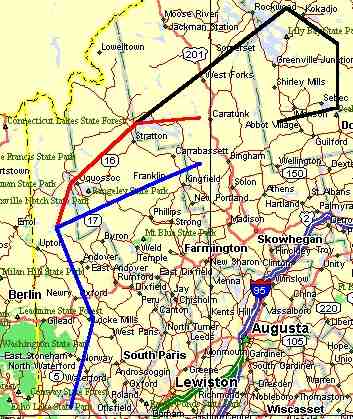 |
Monitoring Planes in VR-840
Planes entering VR-840
must monitor 255.4 MHz, AM, while in VR-840, and generally announce on
this frequency that they are entering the route, a couple minutes
before
entering. Generally, several minutes before this, they tell
Boston Center ATC that they are proceeding to the route, usually on 263.05 or 282.2 MHz AM.
Other frequencies sometimes used prior to entering
are the Portland approach frequencies, ie 381.2 and 353.9.
While in the route, F-16s from Vt
ANG, Burlington, often
use 138.525 for air to air communications. Other bases use many
different A/A freqs, too numerous to mention.
|
VR-840 begins at Pleasant Mountain just west of
Bridgton, Maine, and proceeds north through Locke Mills, Rangeley and
up
around Greenville, Maine. Planes are allowed to fly as low as
100' above ground level in VR-840, but usually they fly at 500' and at
speeds typically around 500MPH.
Several different planes have been
observed flying VR-840, including
F-16, A-10, F-15, AV-8, EA-6B , B1b , P3, KC-135 ,
KC-130, T-37, T-45, and a few others.
Below are a few pictures I've taken of the
planes. Note, at first I found it very difficult to get a picture of a
plane
coming over at 500' and 500mph, mainly because it is hard to get it in
the viewfinder of the camera, but I am slowly learning the techniques
necessary. Some of the pictures are low quality, others
aren't too bad, others are pretty good. The first pictures were
generally taken with a
VHS video camera, and captured via computer video capture card, these
were all limited to 640x480 resolution, and weren't very good.
Later I
graduated to various digital cameras, first to a Sony
digital videocamera and eventually to a Nikon D7 with a cheap 500mm
lens. In
general, I've found that the long focal length or optical zoom is more
important than megapixels for getting good pictures. It is also
important to have a camera with a real eyepiece rather than a screen
for viewing, and it is preferable to have a camera that doesn't blank
out the view when the picture is snapped, because you lose the
plane from the view while processing. When using a zoom lens, I used to
start zoomed out to find the plane, then zoom in, however with the
fixed lens, this isn't possible, so at first, I had problems finding
the planes with the 500mm lens. However I quickly learned to keep
both eyes open, and if you focus on the plane with the eye not looking
through the camera, it somehow guides you to find the plane in the
camera view. I can now generally locate a plane in the camera in
approximately a second.
I've also found that it is almost impossible to get a good picture when
taking a picture into the sun (partly because my lens is very cheap,
and the sun reflections destroy the contrast), and I generally get poor
results on
cloudy days, in both cases because the side of the plane in view isn't
illuminated. The best results are obtained on bright days with
the sun behind, and in particular, bright days when there is snow on
the ground to reflect up against the bottom of the plane.
I'm trying to keep the newest pictures in this
main page (although I'm about a year behind in keeping it up to date),
and the older pictures can be found by clicking the links above.
One advantage of the older pictures above is that some of them include
links to video clips of the planes, since many of them were taken with
the video camera.
Anyway, the pictures below were taken from April
2008 thru April 2009.
Below,
April 20, 2008
I heard a slow moving ROAR approaching from the
east. Couldn't see anything at
first, then throught the trees I saw this weird looking plane. At
first I thought it was a B1b, but this one has 4 engines on the wings,
and has a weird looking nose, and has a huge engine sized bump just off
the co-pilots window area. Weirdest plane I've ever seen.
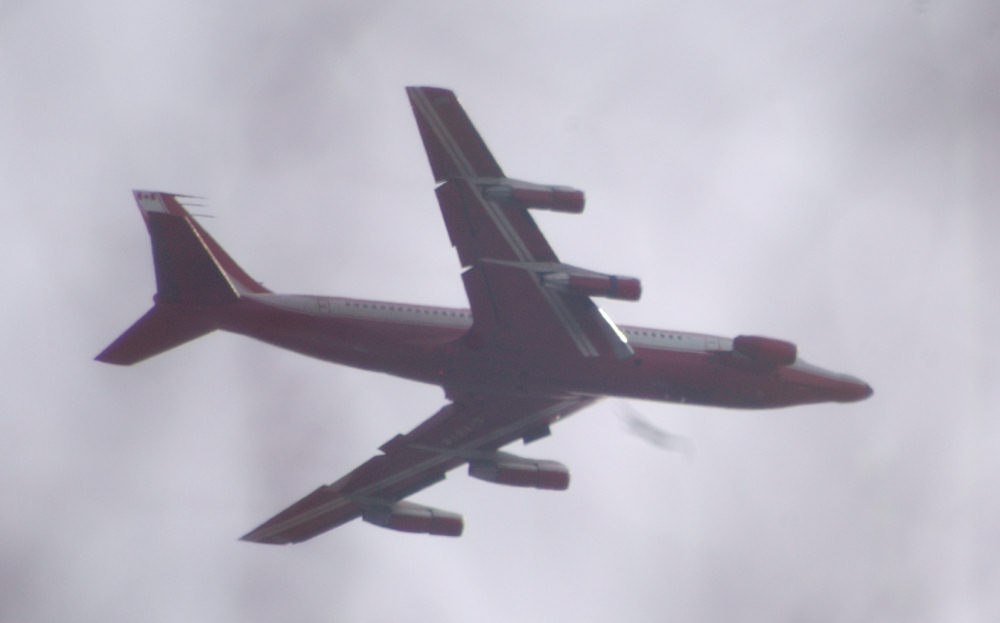
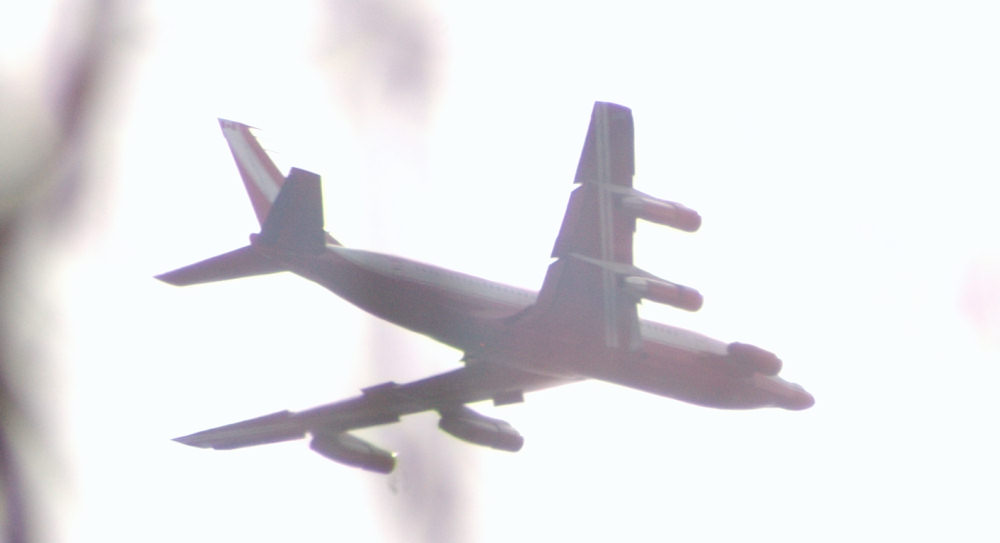
Below, a closeup of the tail.

After quite a bit of discussion on a milair mailing list, the plane was
finally identified as a Canadian test bed plane. Ie the bump on
the side was apparently an engine it was testing. It
actually wasn't flying up VR840, but just happened to fly over between
point alpha and my location.
One of the people in my list found a picture of the plane, ie
http://www.airliners.net/open.file?id=0026697&size=M
Note the Canadian flag on the tail, compared to picture
above. Anyway, this was a strange one to see. The
plane was observed flying through the area over a 2 or 3 day period.
July 12 2008
Unknown F-16 flew up VR-840
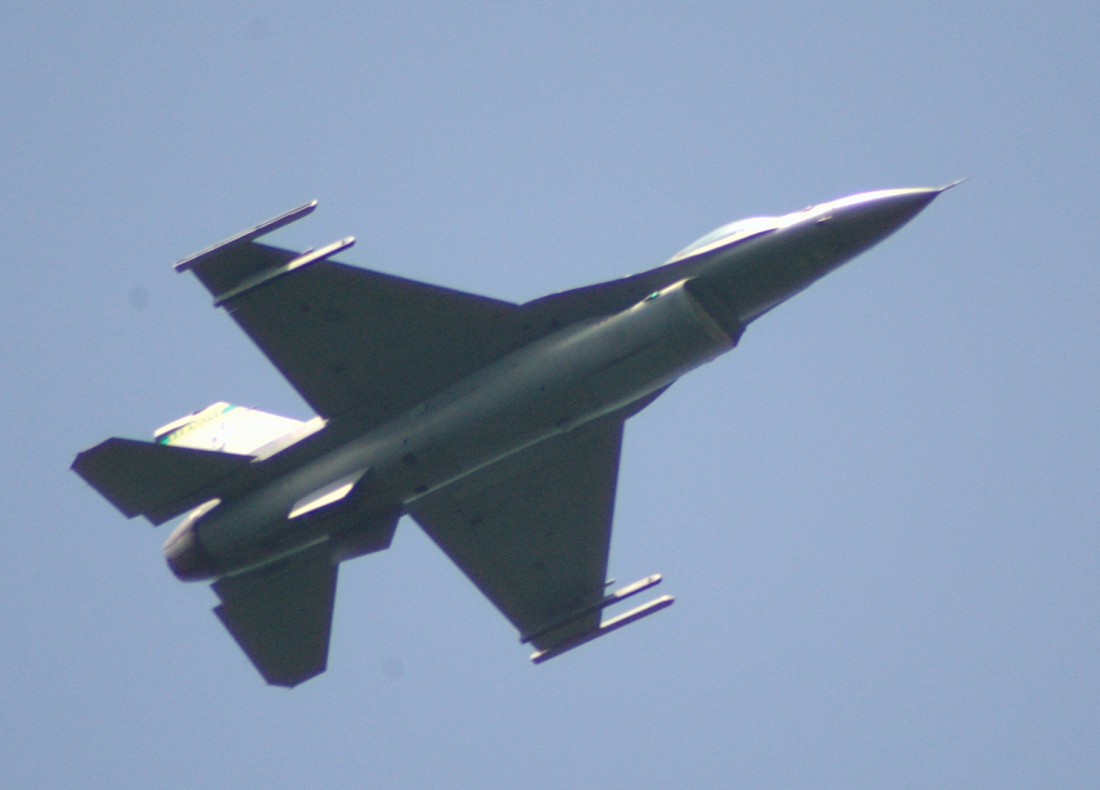
July 18 2008
Yankee 69, a Marine KC-130 flew up VR-840.
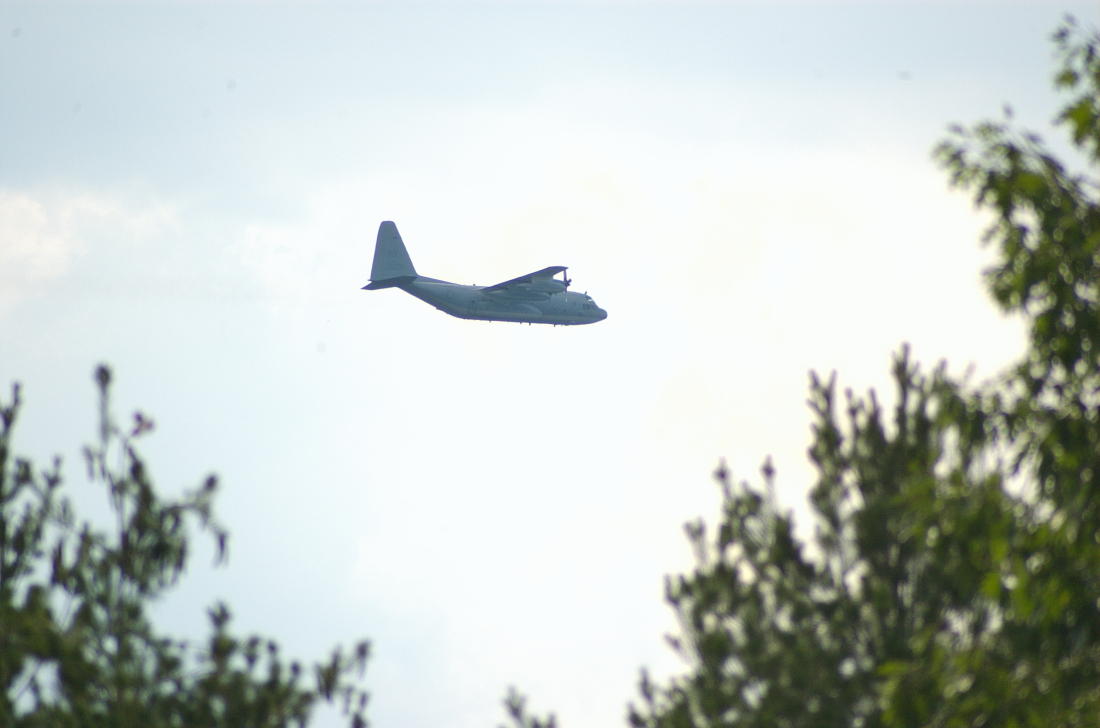
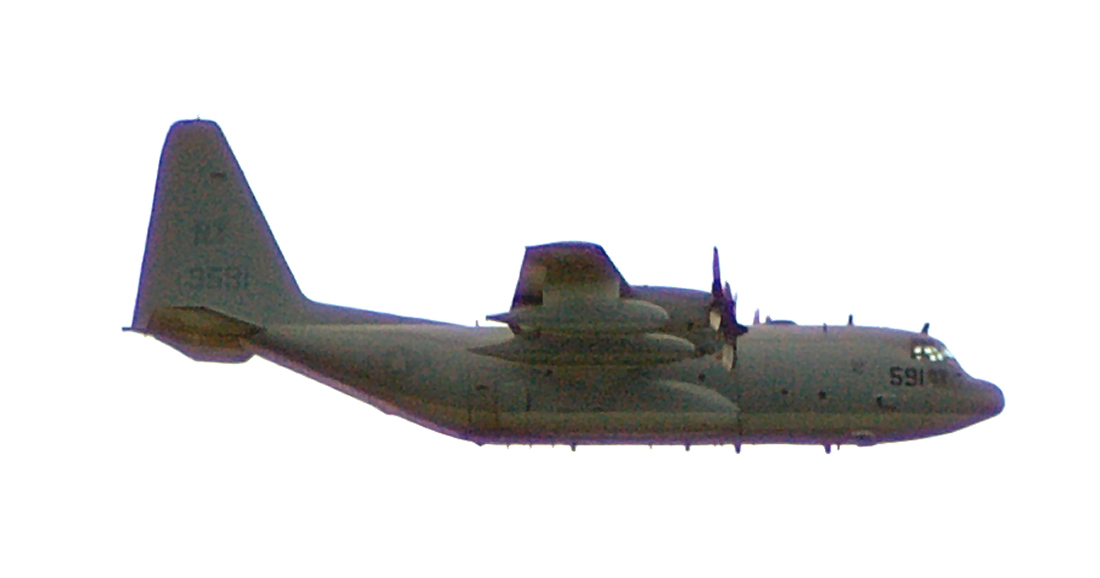
Aug 20 2008
Sniper-1 , a Vt F-16 . Notice the missles on the wings.
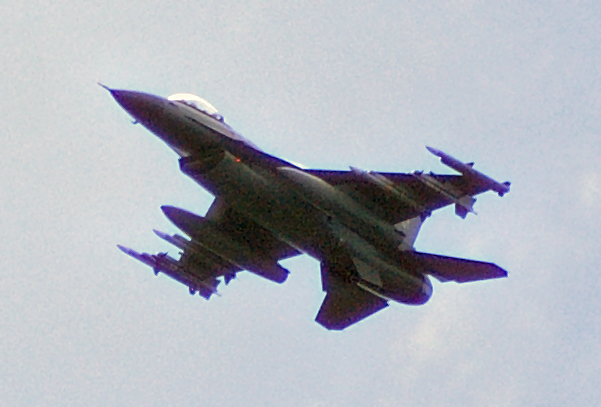
October 4 2008
Yankee 72, another Marine KC-130
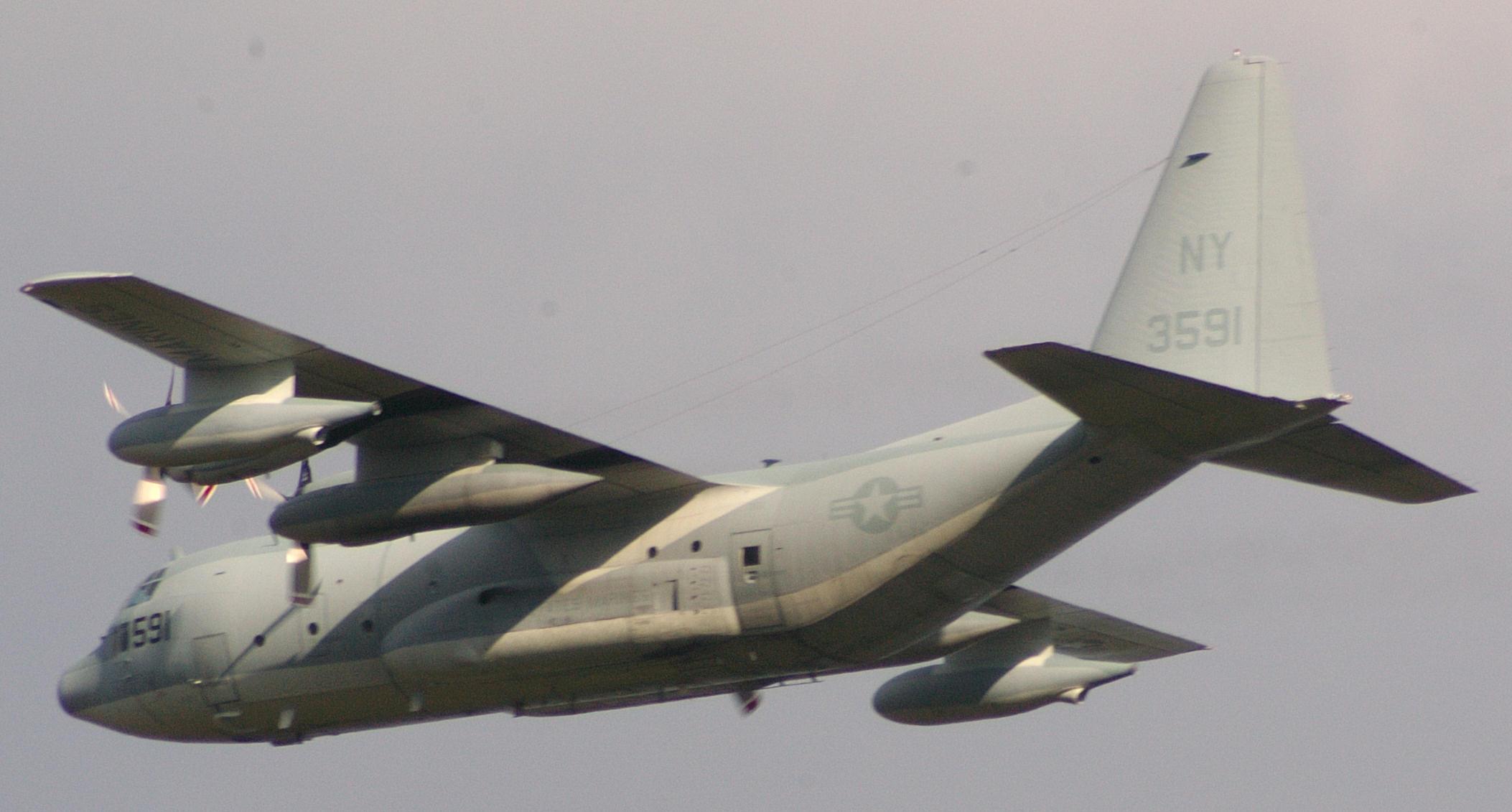
Below, October 23, 2008
Goose-79. Strange looking C-130. Apparently has some
interesting electronics installed both in the nose, and back by the
tail.
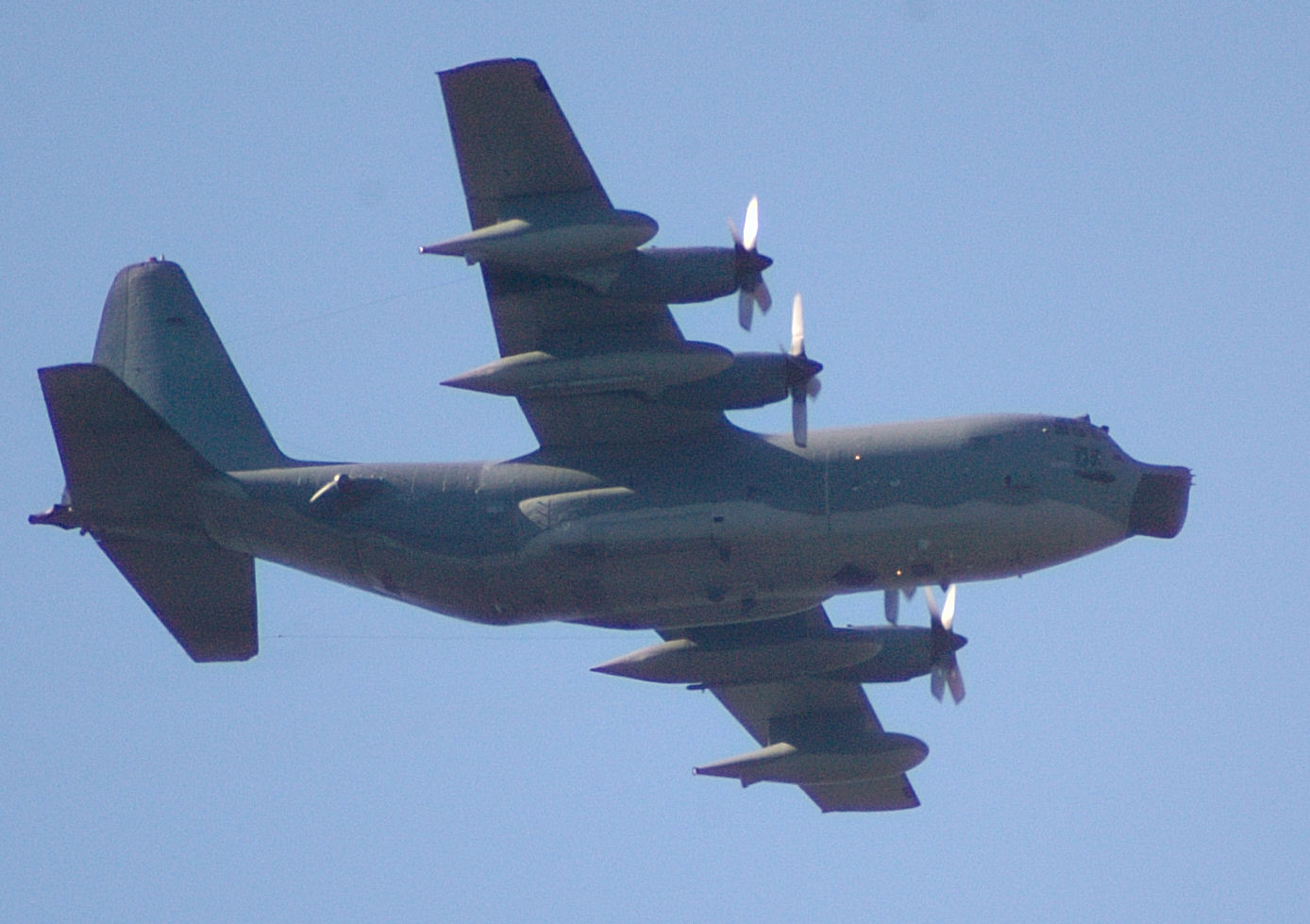
October 23 2008
Another SNIPER flight of F-16s flew up VR-840. Actually
the zoome in, in front of the above Goose flight.
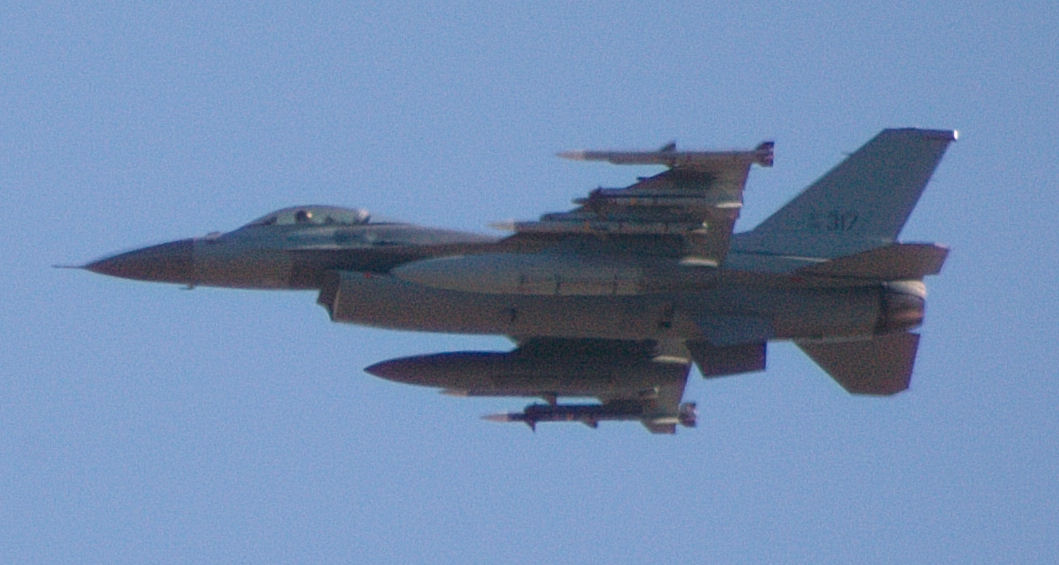
Also October 23, 2008,
Yankee-72, a NY marine C-130
Tail number 5353
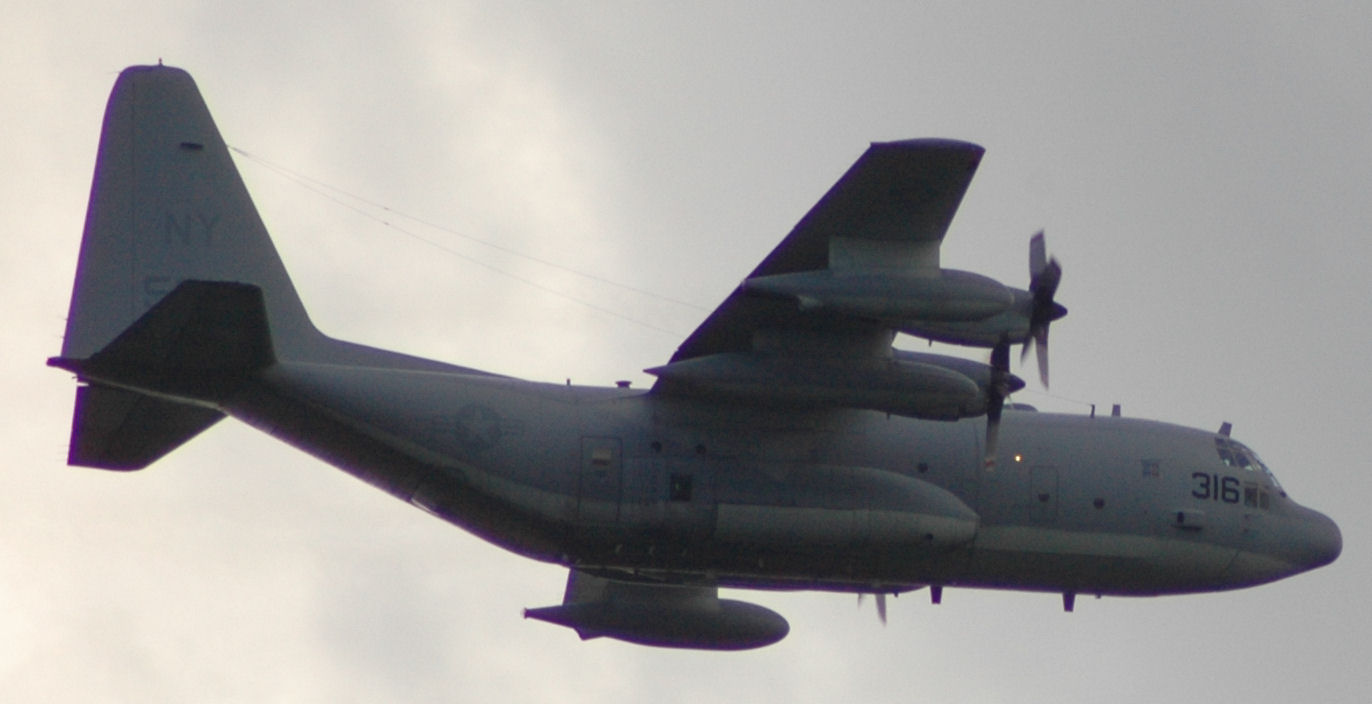
December 2, 2008
Sniper-1 , Vt F-16, again, lots of apparently live missles on the wings.
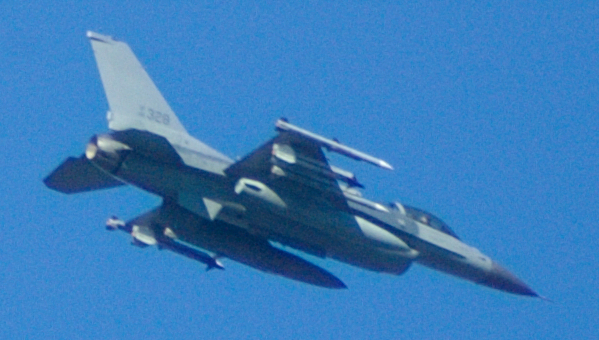
Feb 11 2009
VAPOR-1, another Vt F-16
Picture blurry, but good enough to identify it as a Vt plane.
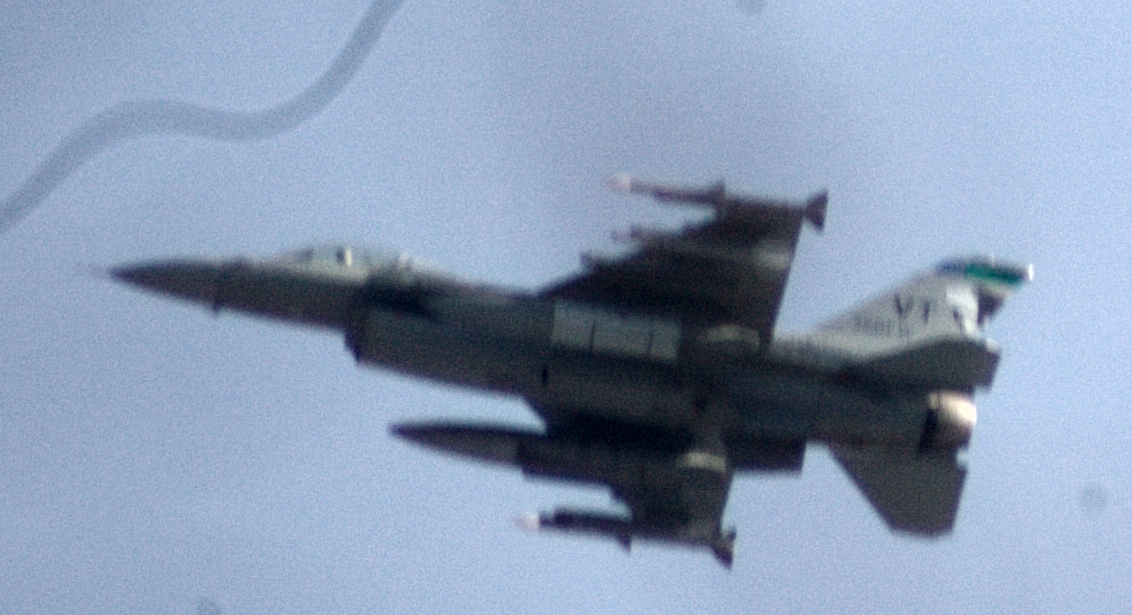
March 10, 2009
Sniper-1 flight. Vt F-16
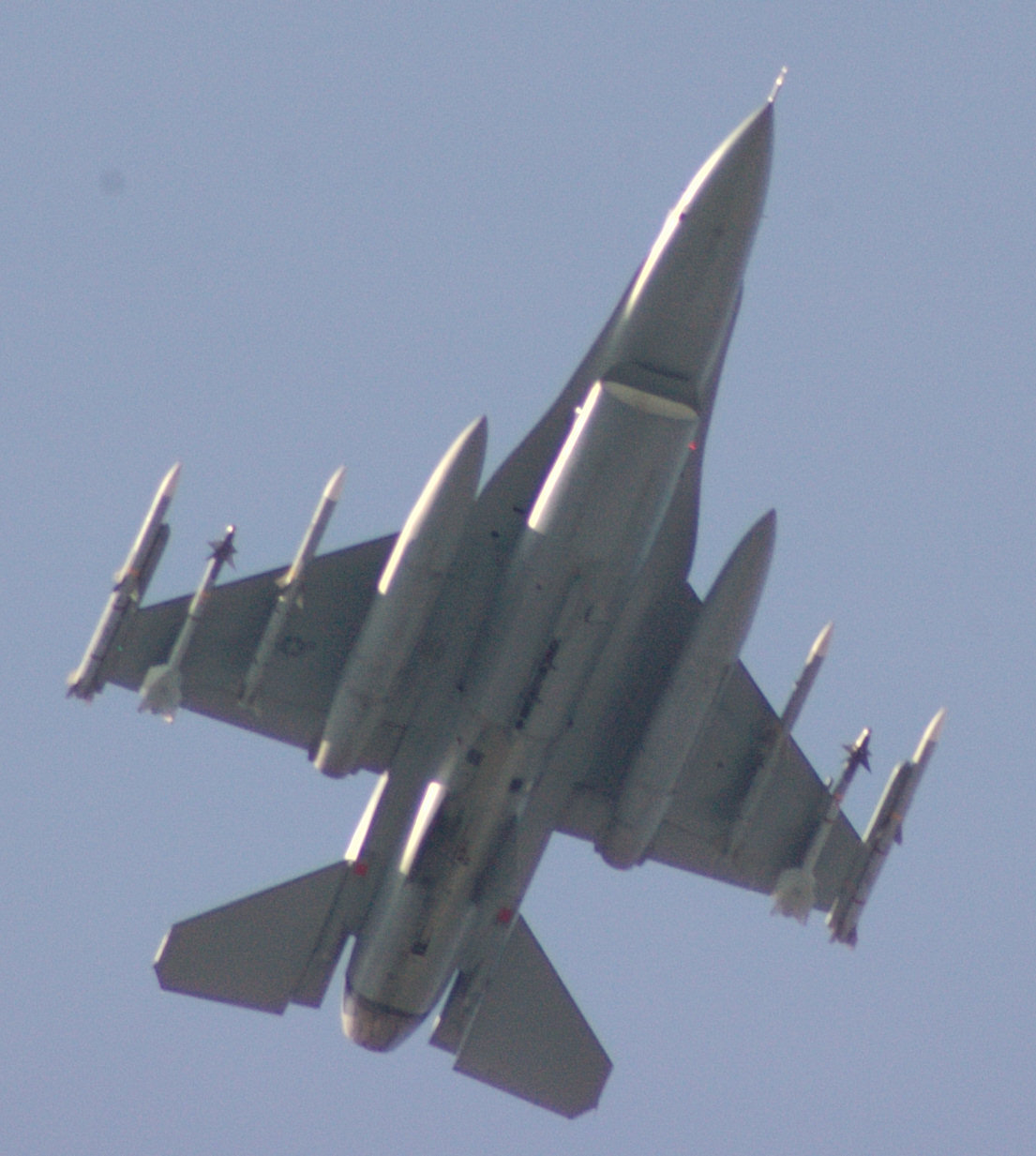
Note, the above image shows a good view of the missles on the wings,
including some color bars that apparently denote whether or not the 3
sections of the missle are armed or not. Supposedly there are 3
parts to each missle, the "seeker", the "warhead", and the
"propellant", front, middle, rear, respectively, and on each
section there are colored bands indicating whether they are
live. From what I have read, a front yellow stripe means
live electronics, if that is followed by brown stripes, then the missle
is live with warhead and propellant. Blue bands apparently mean
that section is inert. You can ALMOST figure out the colors in this
picture, but not quite. It is clear though that there are some
yellow bands, but I'm not sure they are in the positions described
above.
However, this same plane made a 2nd pass on March 12, 2009
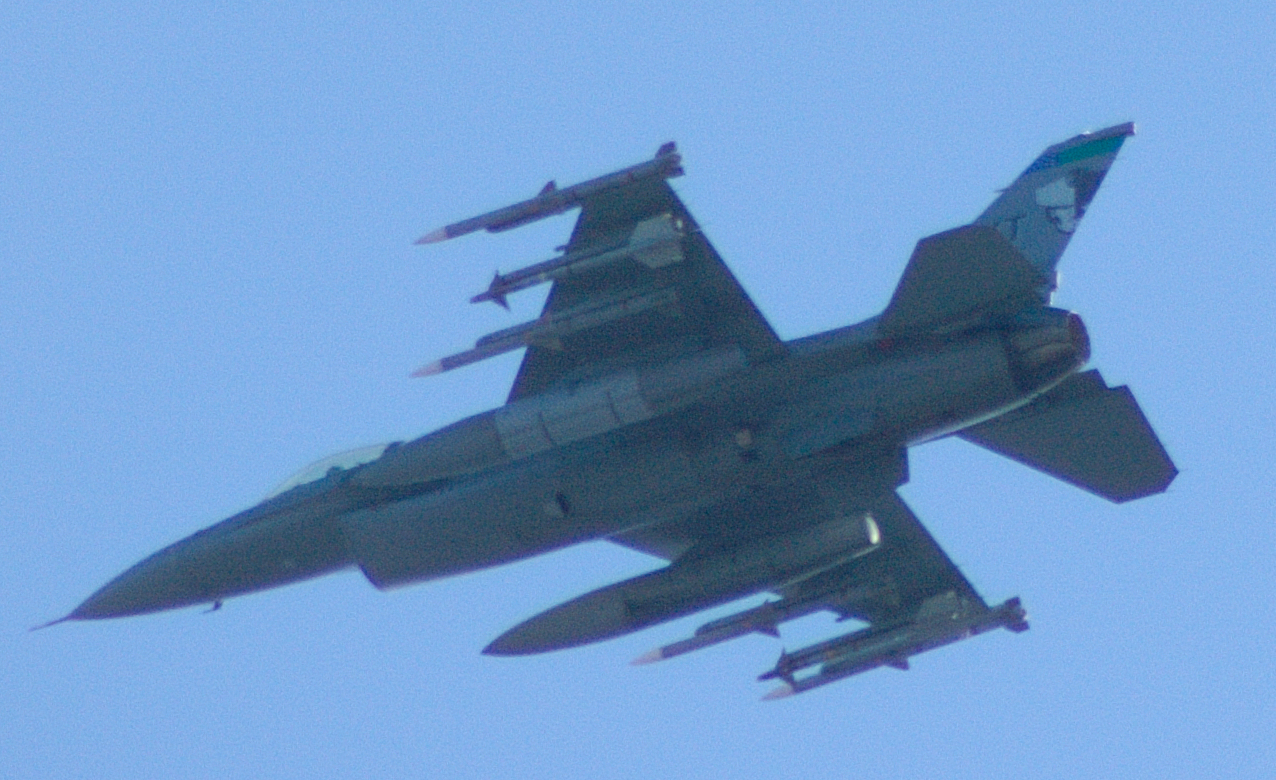
This picture isn't quite as sharp, but it clearly shows some of the
bands as yellow. In any event, I'm now convinced that these
missles are at least partially active, although probably just the front
electronics section.
March 24, 2009
DEMO-1 flight, again Vt F-16s tail# 87-001294
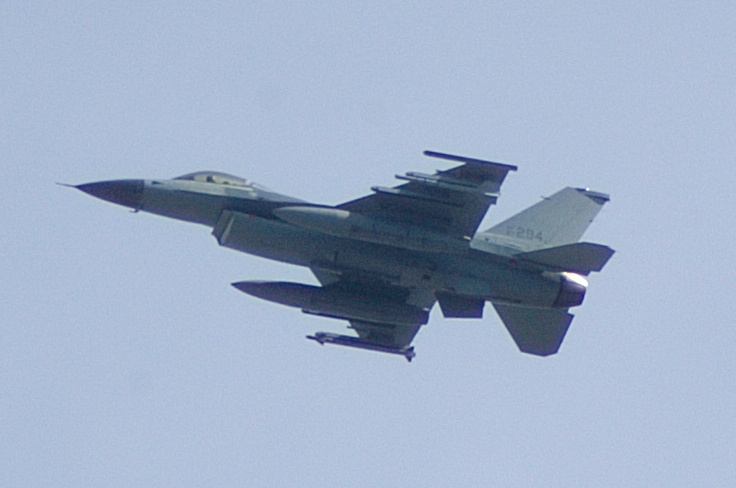
A bit more than an hour later, the same flight came up the route a
second time.
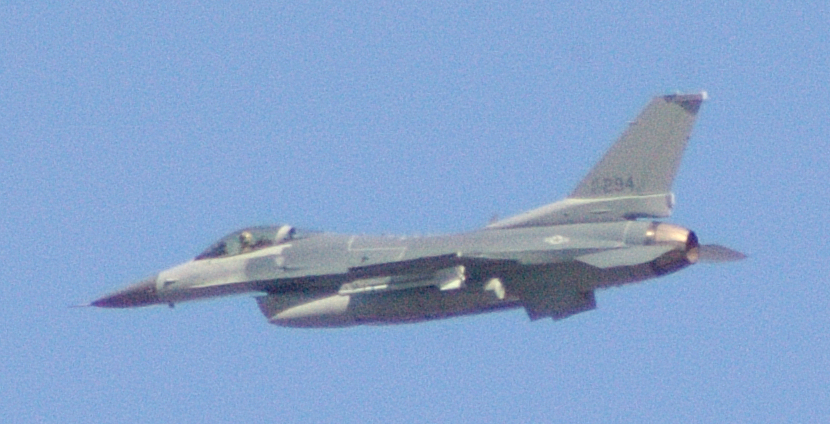
April 14, 2009
SNIPER-1 flight. {this is the plane with the
missles}.
Nice view of the "Snoopy" tail art, which is new for the Vt planes.
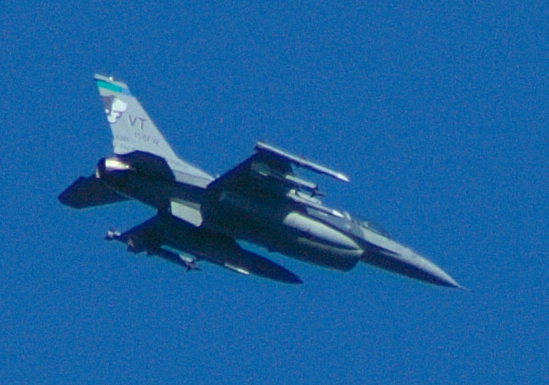
April 17 2009
Listening to DAGGER flight (Vt F-16s) do 2 vs 2 air-air intercept
practice on the radio. They were nearby, and I was able to see their
contrails working in the nearby Laser airspace. Then I saw an
airliner fly through the airspace. Then I heard on the
radio...... the
chase pair declares two groups of boogies, and goes after them, saying
somthing like "lead group 35,000". Then I hear something like
"DUDE...that lead group is an air liner!", and I look up, and see a
small vapor trail going after the airliner. Funny!
Below is when the F-16 is attempting to chase the airliner.
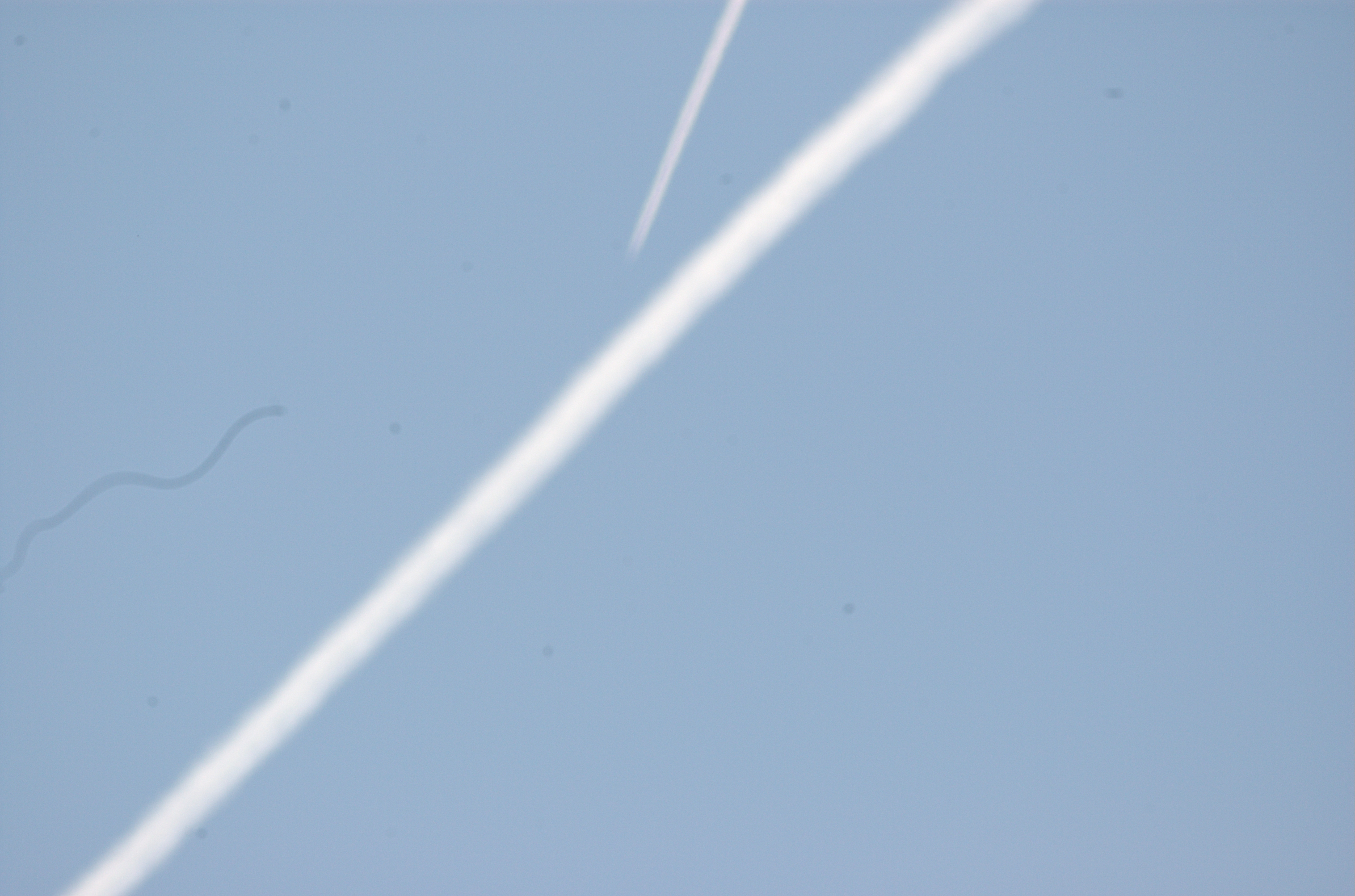
April 20, 2009
JACKAL flight.
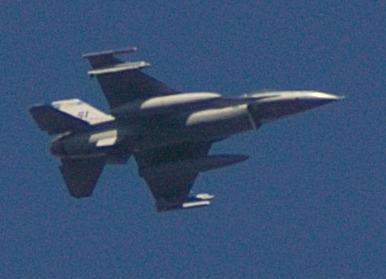
This one is interesting because it appears to NOT be one of the Vt ANG
birds. There is a big "SI" on the tail, which is supposed to
indicate 183FW out of Springfield, Illinois, Illinois ANG.
However I was directed to a web page which showed that the 183rd was
being deactivated, and it's planes were being transferred to other
groups, including Burlington. So this is apparently one of the
transferred planes, but hasn't been repainted with the Vt colors yet.
April 30, 2009
Yankee-73 flight.
This was a flight of 2 KC-130s that went directly
overhead, one right after the other, separated by only about 7 seconds.
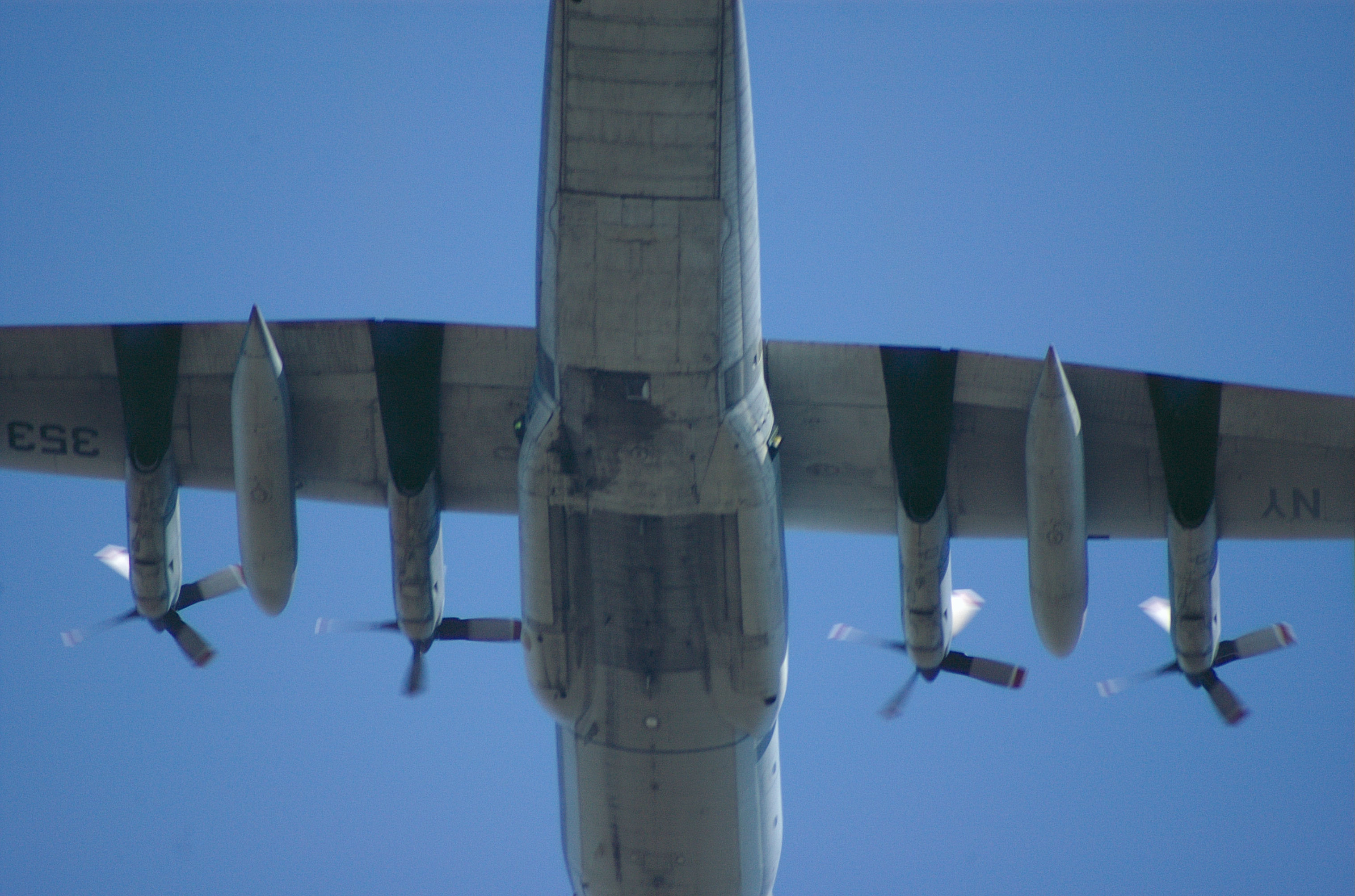
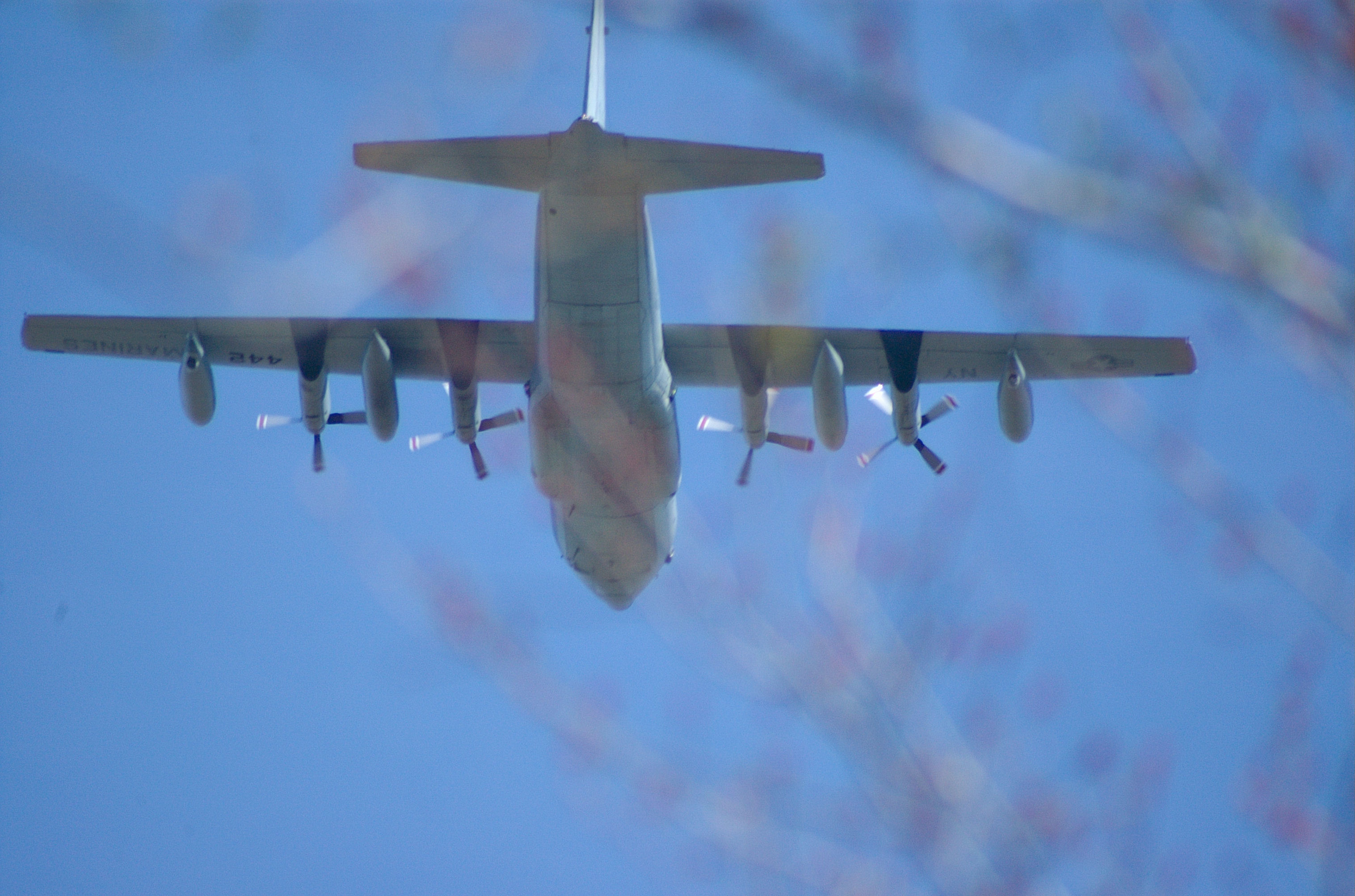
The 2nd plane, ie tail# 442, is a plane that has been reported as being
used during space shuttle launches.
.
MORE TO COME.





















